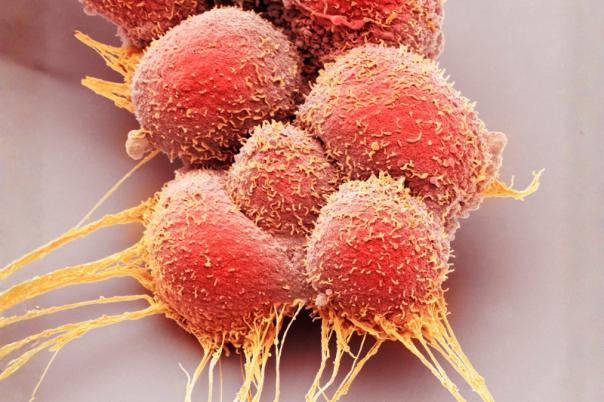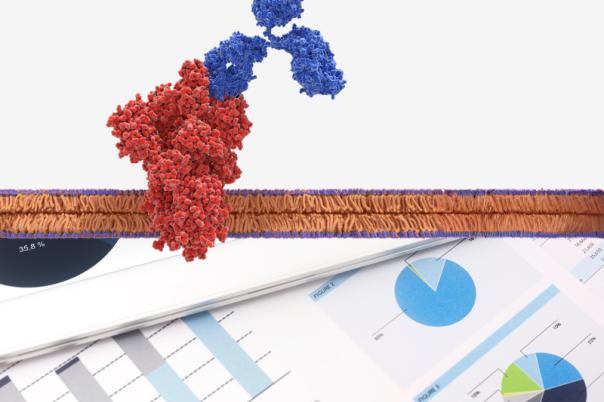NK cells are part of innate immunity and are regulated by an array of germline encoded activating and inhibitory receptors. The interplay between these receptors defines the activation status of NK cells. Lukas Pekar, Lab Head at Merck KGaA discussed strategies for efficient NK cell redirection by targeting NKp30.
Perkar explained that either bi-specific or multi-specific antibodies form an immunological synapse between the activating receptor on the NK cell and TAA (tumour-associated antigen). This should lead to NK cell activation and cell death. Pekar stressed that he isn’t reinventing the wheel: ten years ago, a group led by Matthias Peipp used the extracellular domain of B7-H6 and fused them to HER2-scFv and showed that this activates the NK cell in a TAA-dependent manner. Bouncing off this idea, Perkar decided to repeat these experiments in different architecture, perhaps increasing the killing capacities of this molecule.
The first part of his talk focused on engineering natural ligands. The ultimate goal was to use the bi-specific immunoligand to form the immunological synapse between NKp30 on the NK cell, EGFR, and the tumour cell. This should trigger NK cell activation and the release of granzymes and pro-inflammatory cytokines, ultimately leading to target cell death.
Perkar examined the core structure of B7-H6 with NKp30. He identified eight distinct amino acid residues in the binding interface. These were randomised and diversified to generate a classical yeast surface display campaign, which was used for selection. After several rounds of sorting, the team was able to enrich target positive populations for binding to NKp30. Then, using Sanger sequencing, they expressed around 15 different B7-H6 variants of immunoligands.
Across two different cell lines A431 and A549, the group were able to increase the killing capacity of the natural ligand’s NK cells by 87-fold. Further experiments showed that by incorporating an FC gamma receptor, they could augment NK cells’ killing capacities by around 10-fold.
In other words, the engineered molecule showed moderate binding to NKp30 and was instrumental in inducing NK cell activation and killing. Pekar reiterated that these experiments successfully highlighted affinity variance and showed that affinity maturation of B7H6 led to enhanced binding and killing capacities.
The next part of the talk discussed camelid immunisation and the generation of multi-specific antibodies based on VHHs. Perkar isolated specific genetic information of VHHs, generated classic yeast surface display and then expressed them as bispecific antibodies. After sequencing, a diverse set of molecules was generated. Overall, immunisation of camelids with recombinant NKp30 led to the generation of diverse VHHs with varying affinities and biophysical properties.
VHHs showed a wide range of affinities, with some binding in the triple-digit nanomolar range and others in the sub-picomolar range. The molecules exhibited adequate biophysical properties, with target monomer peaks for more than or roughly 90% after small-scale expression and protein A purification.
Furthermore, the researchers identified two distinct binding modes: one that competed with B7H6 for NKP30 binding and another that did not interfere with the natural NKP30-B7H6 interaction. The non-competitive VHH antibodies proved particularly useful in scenarios where tumours exhibited heterogeneous expression of TAAs, ensuring that NK cells could still recognize stressed or infected cells via their natural ligands.
In summary, the research presents novel and highly effective NK cell redirection strategies. The experimental data displayed significant improvements in tumour cell killing efficiency and cytokine modulation. In the future, this could offer potential therapeutic applications for cancer treatment.





